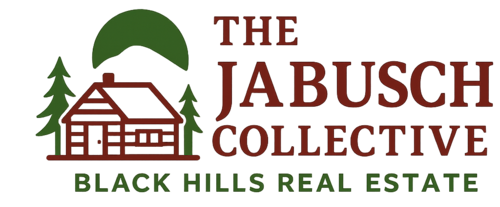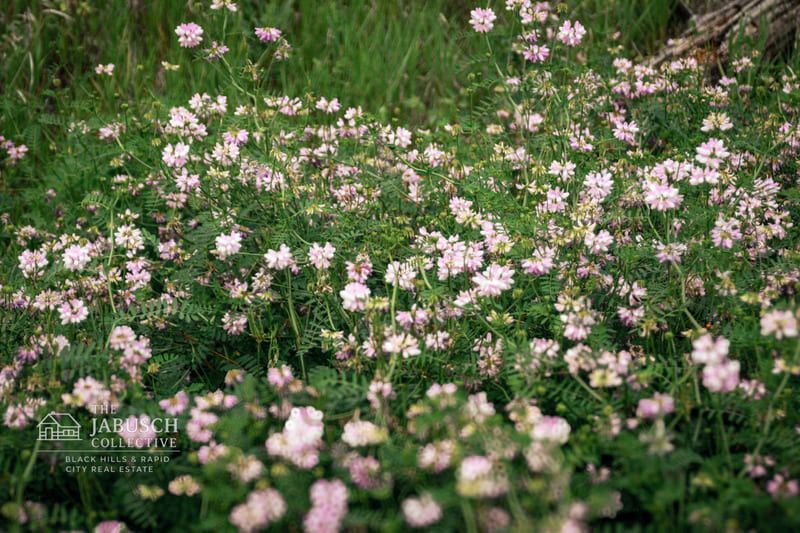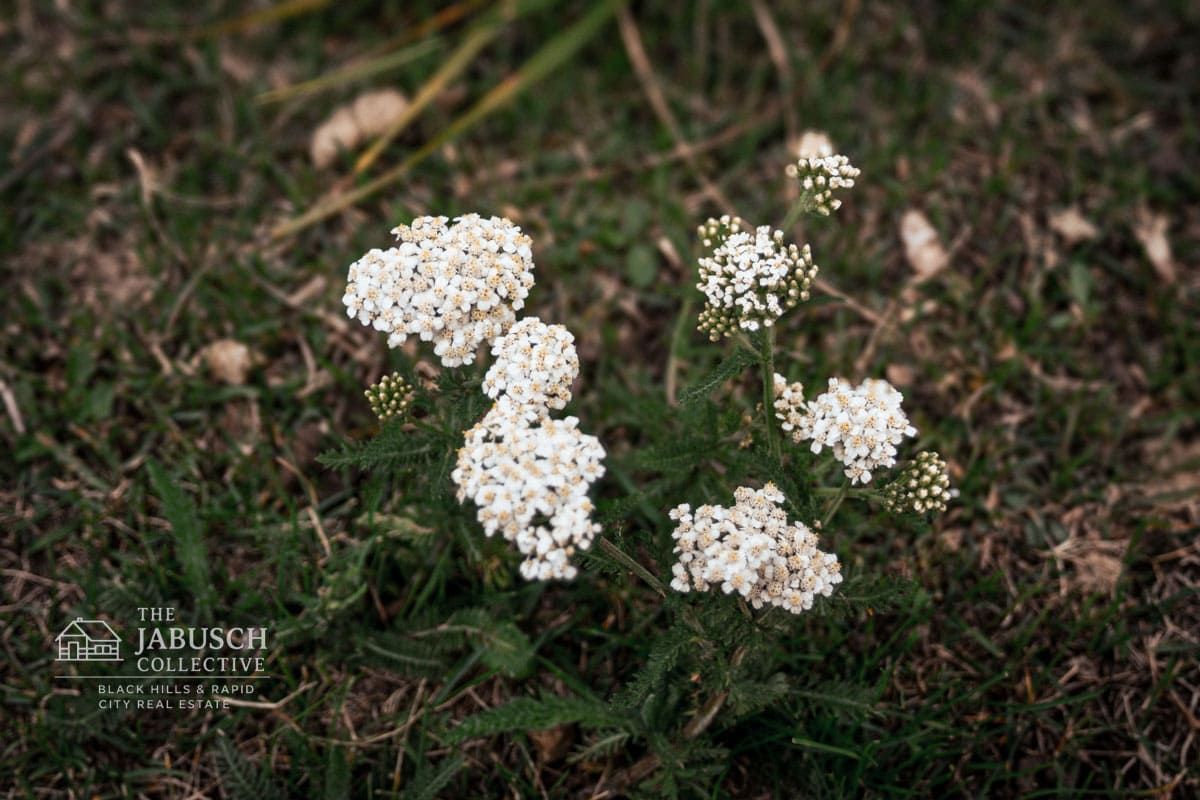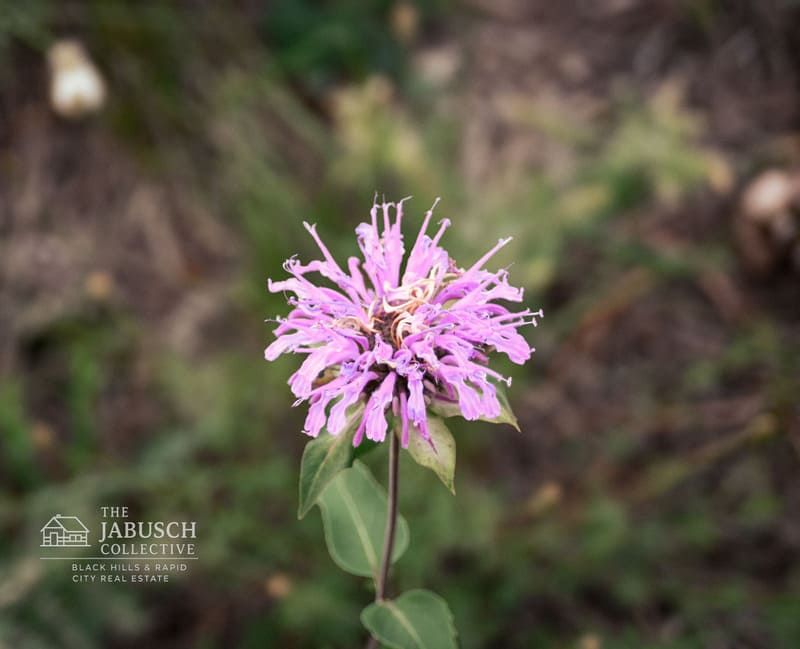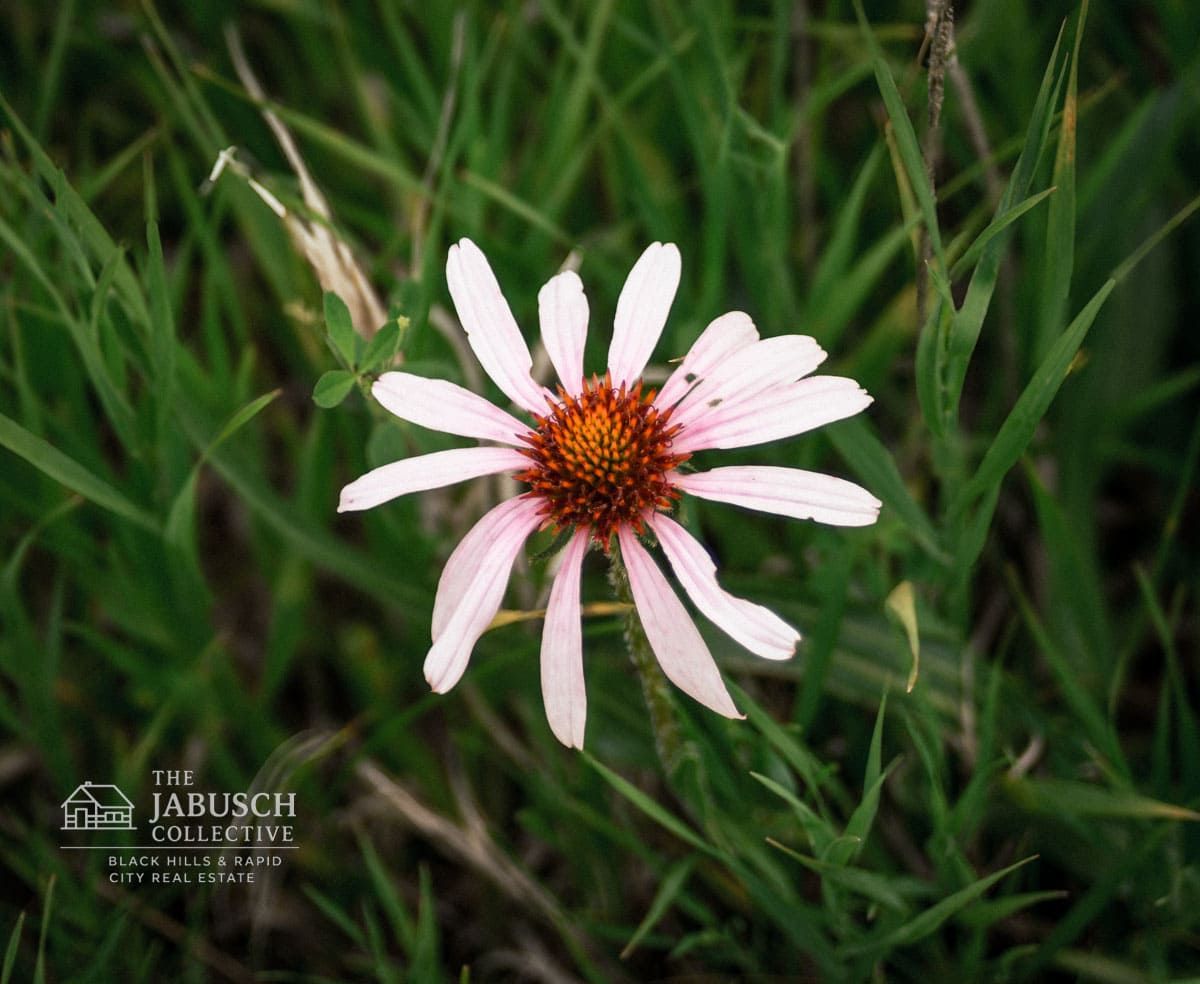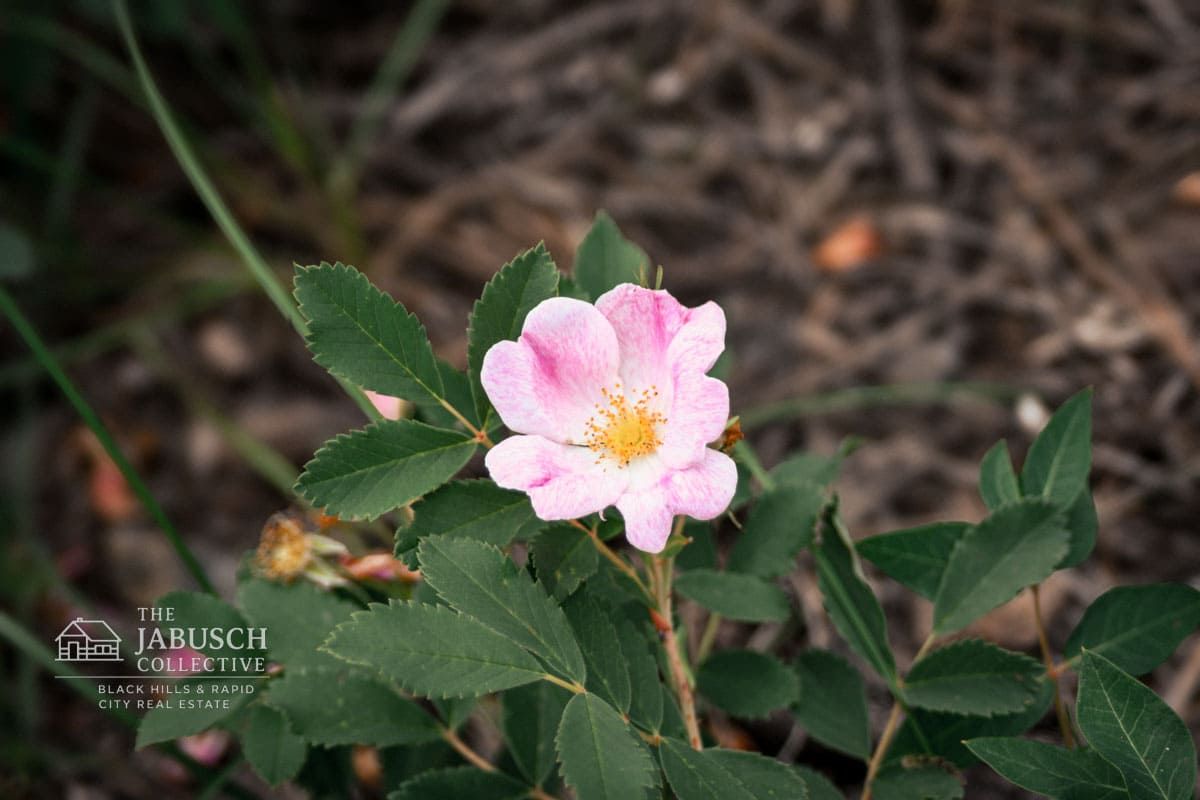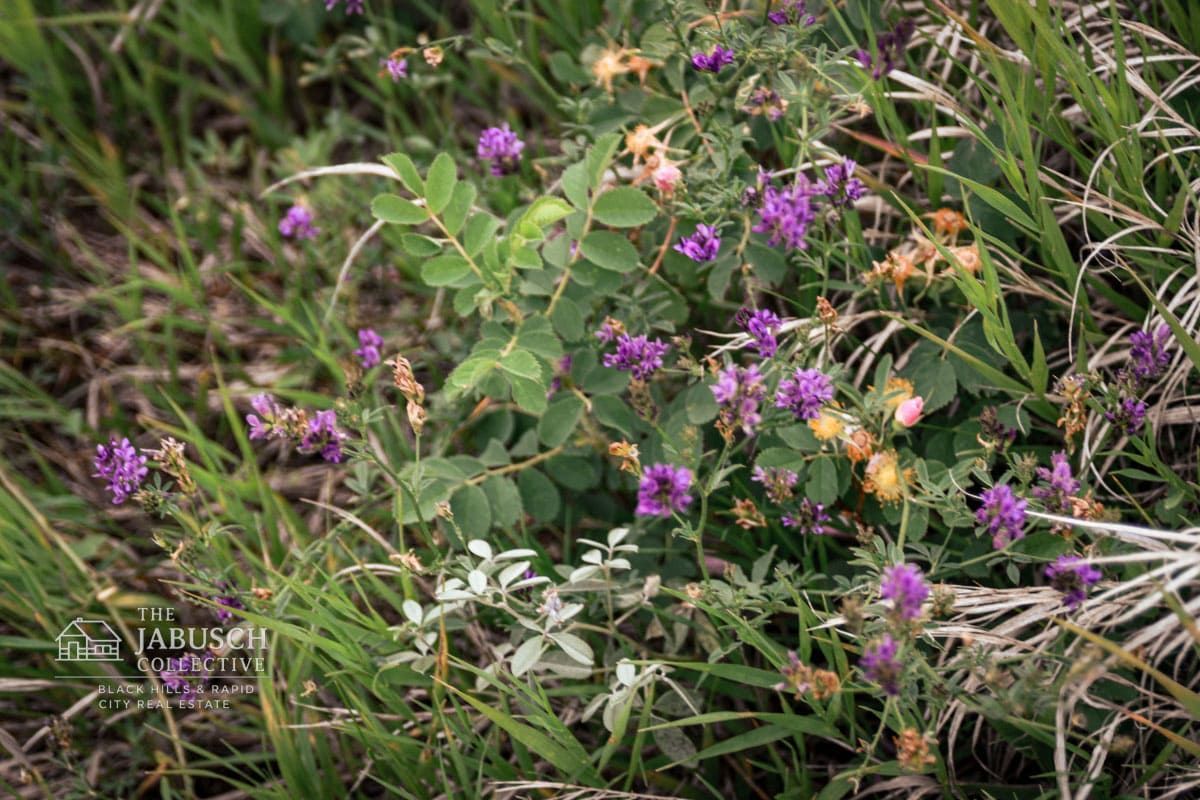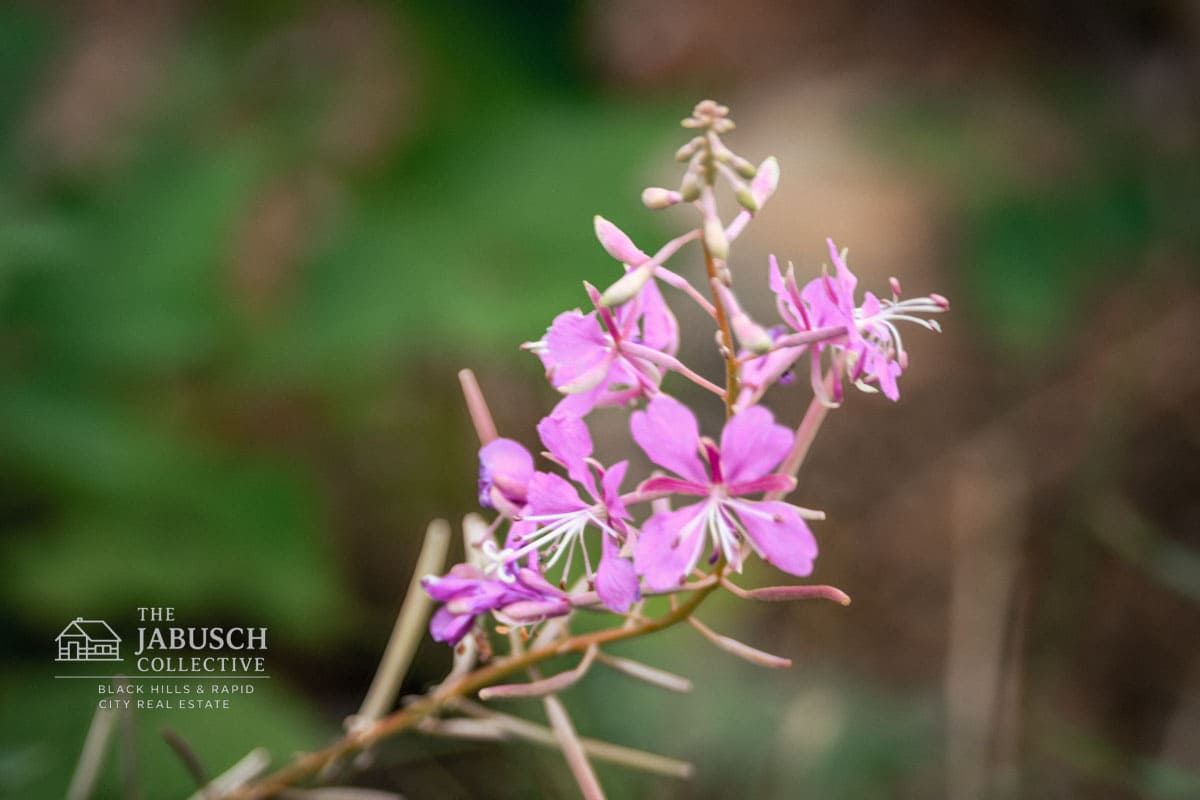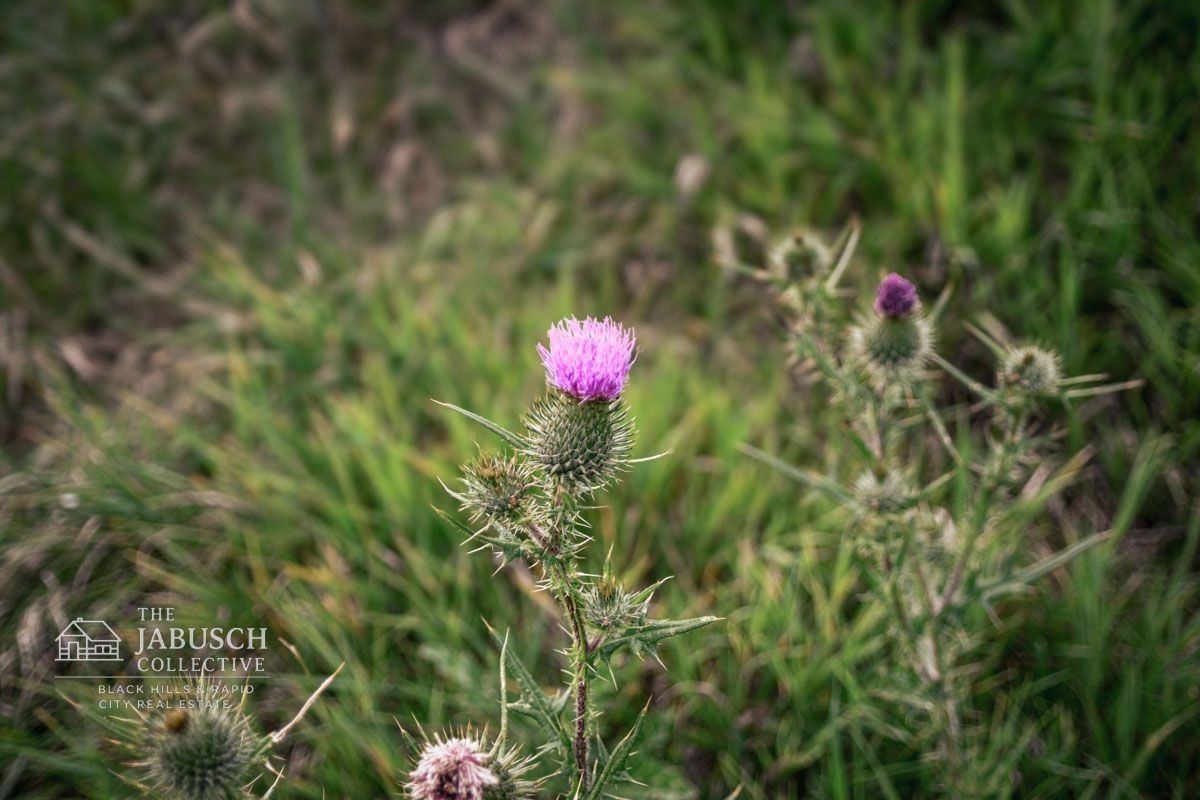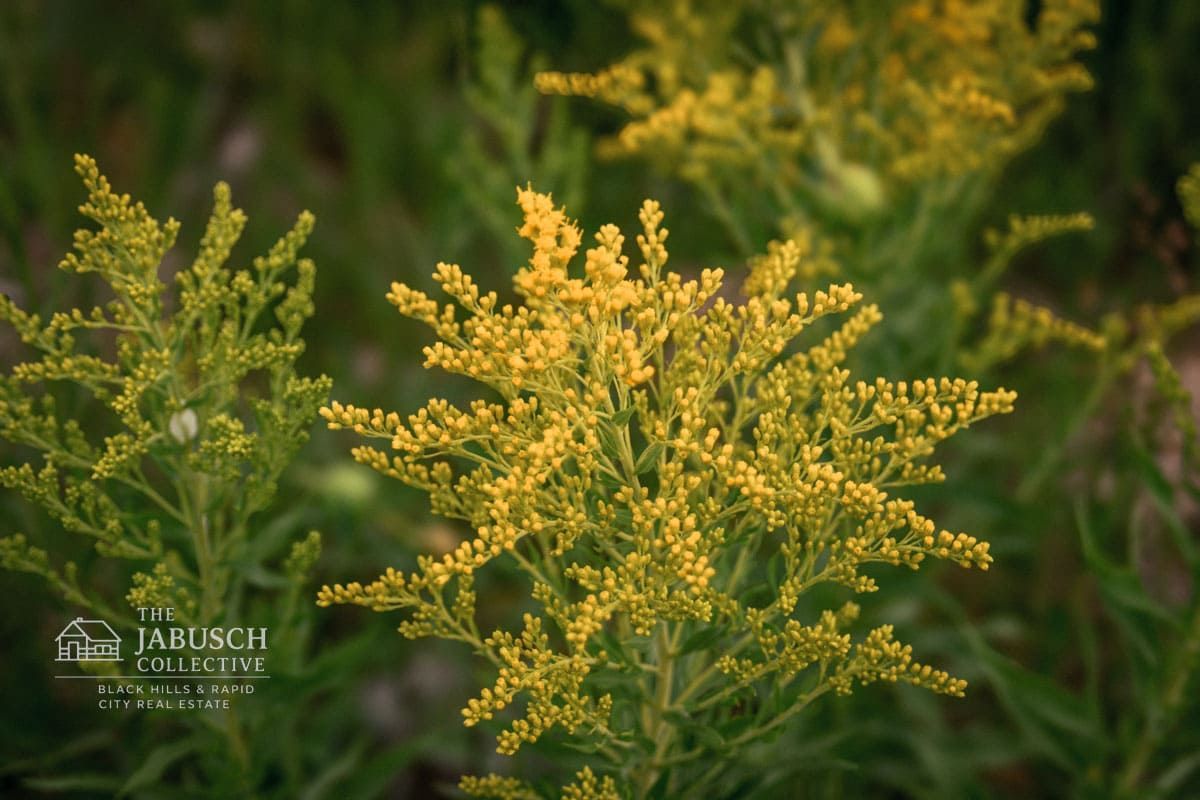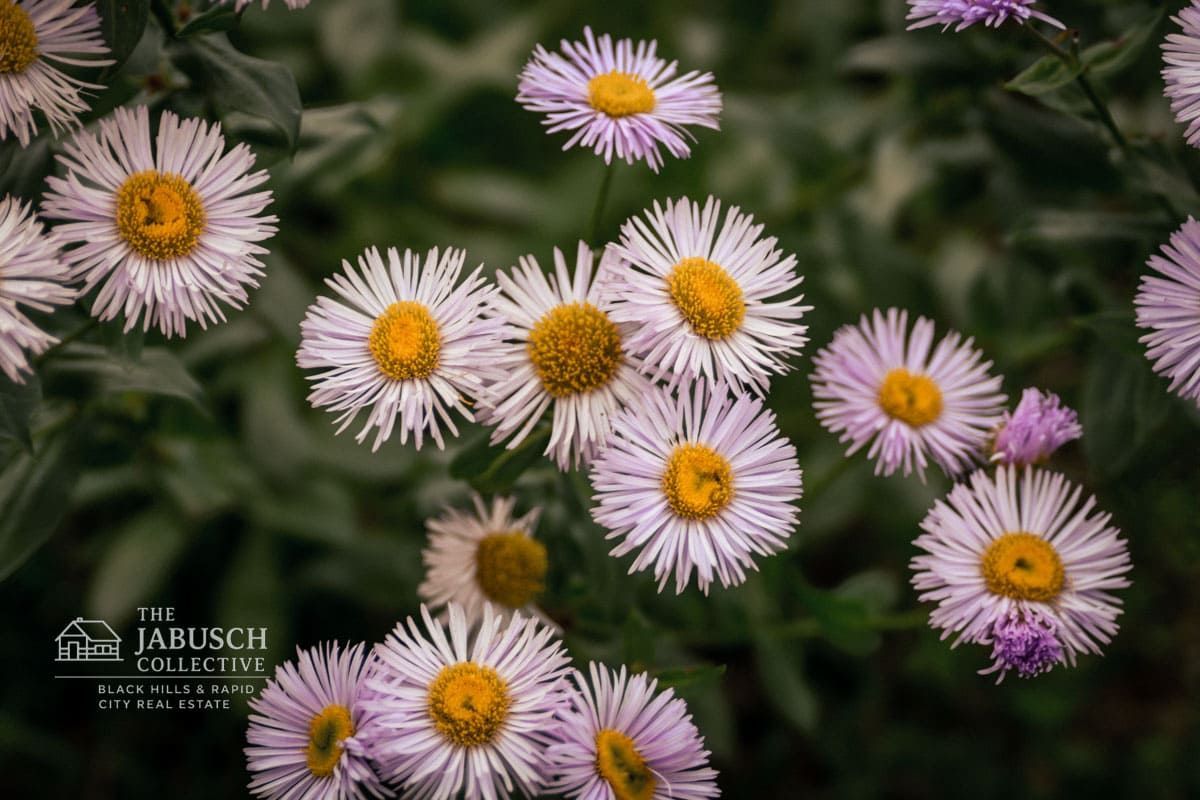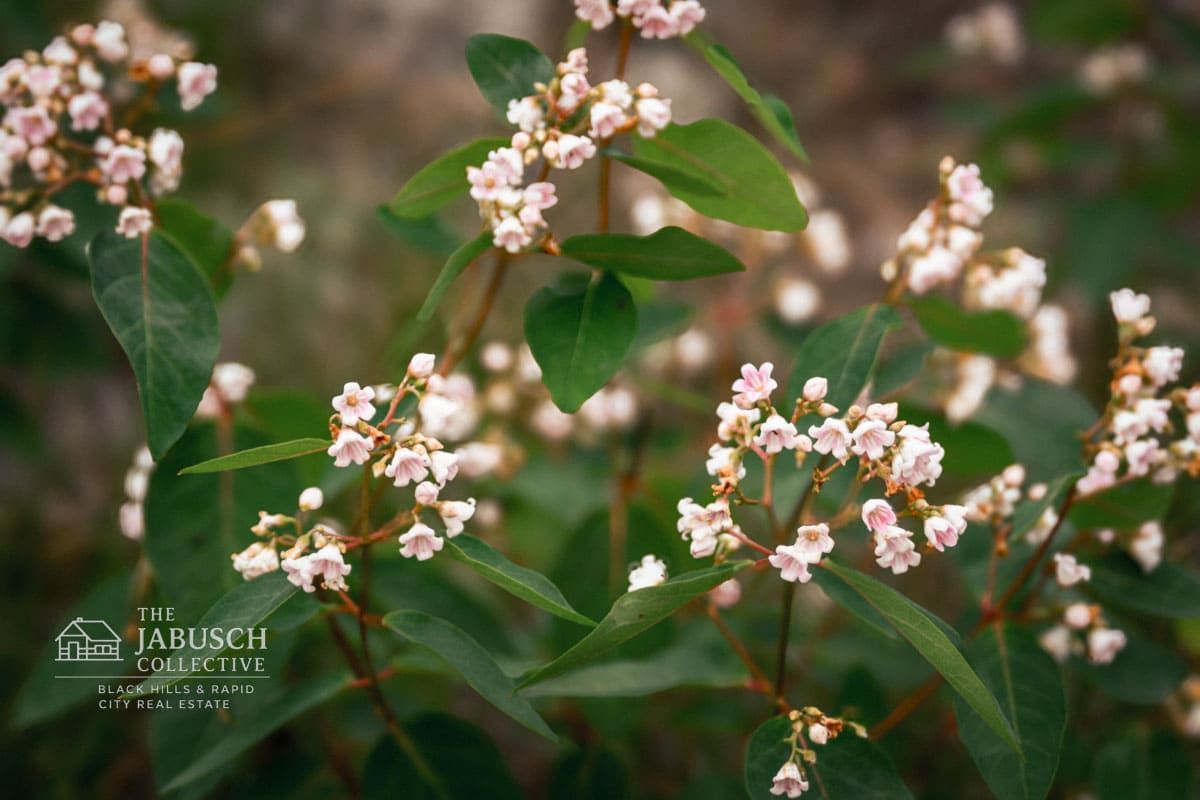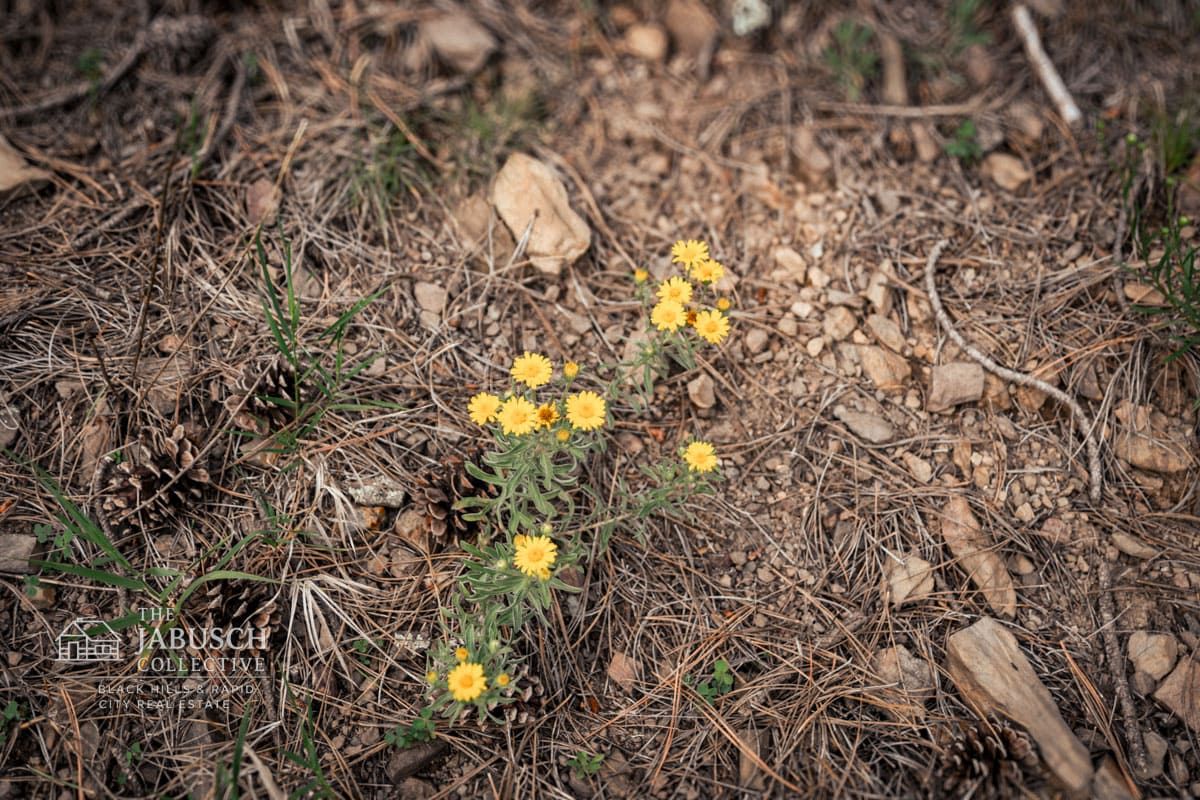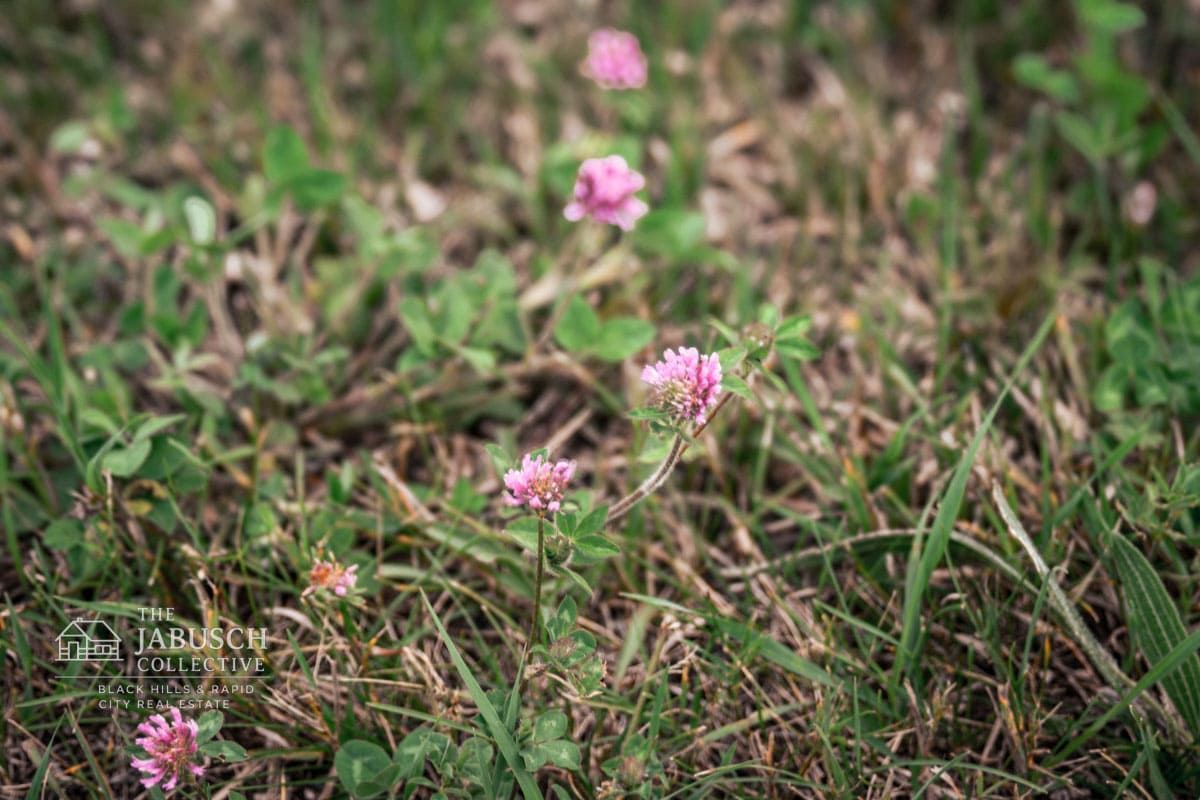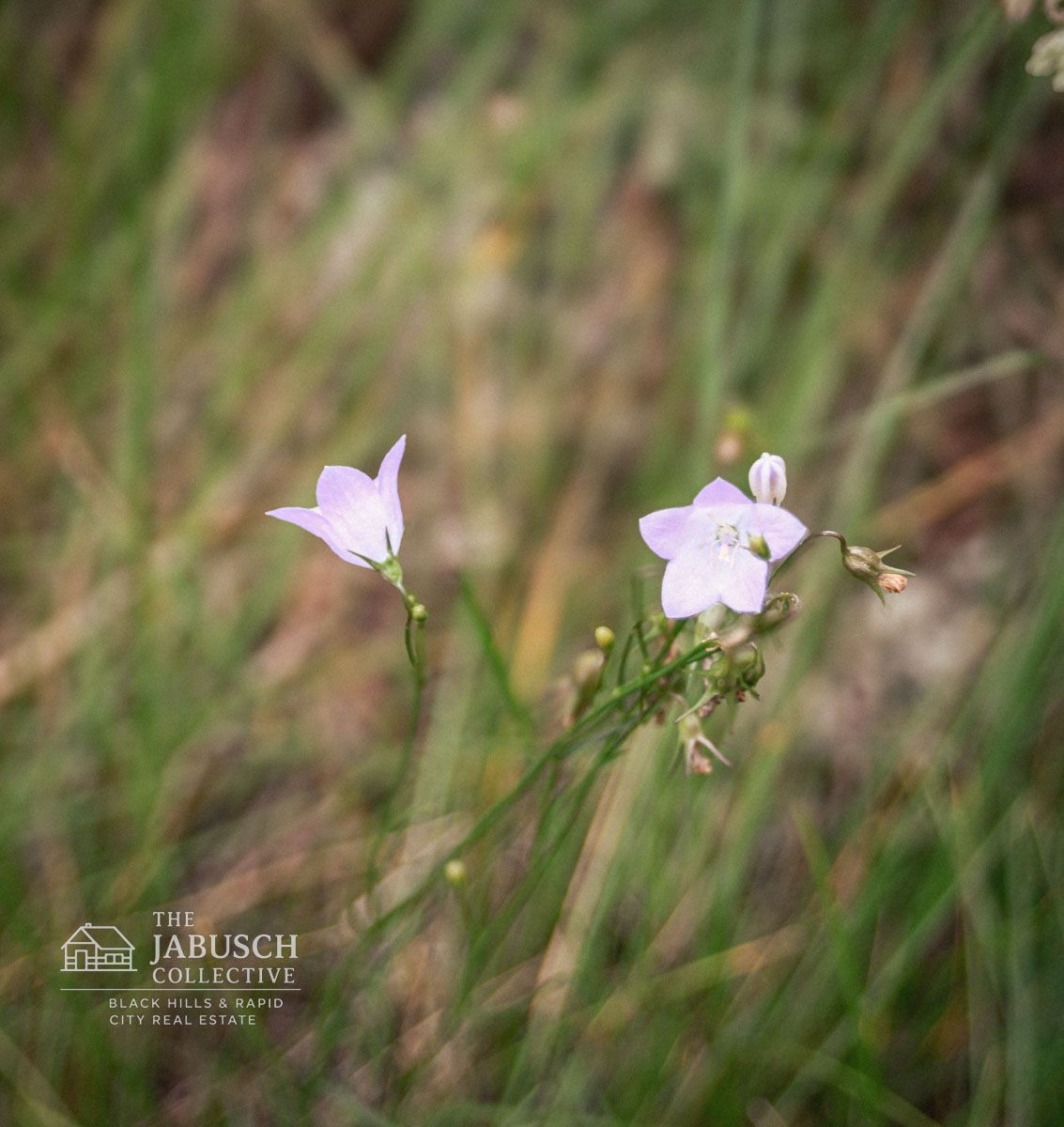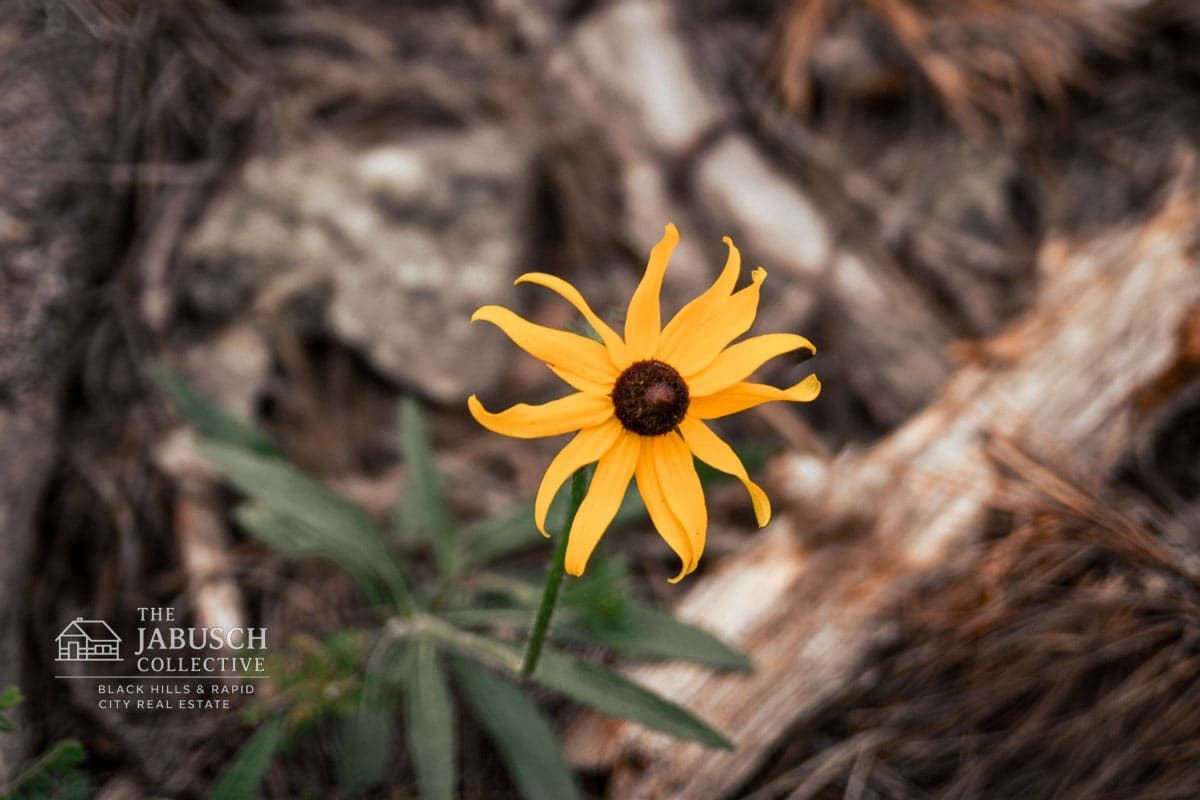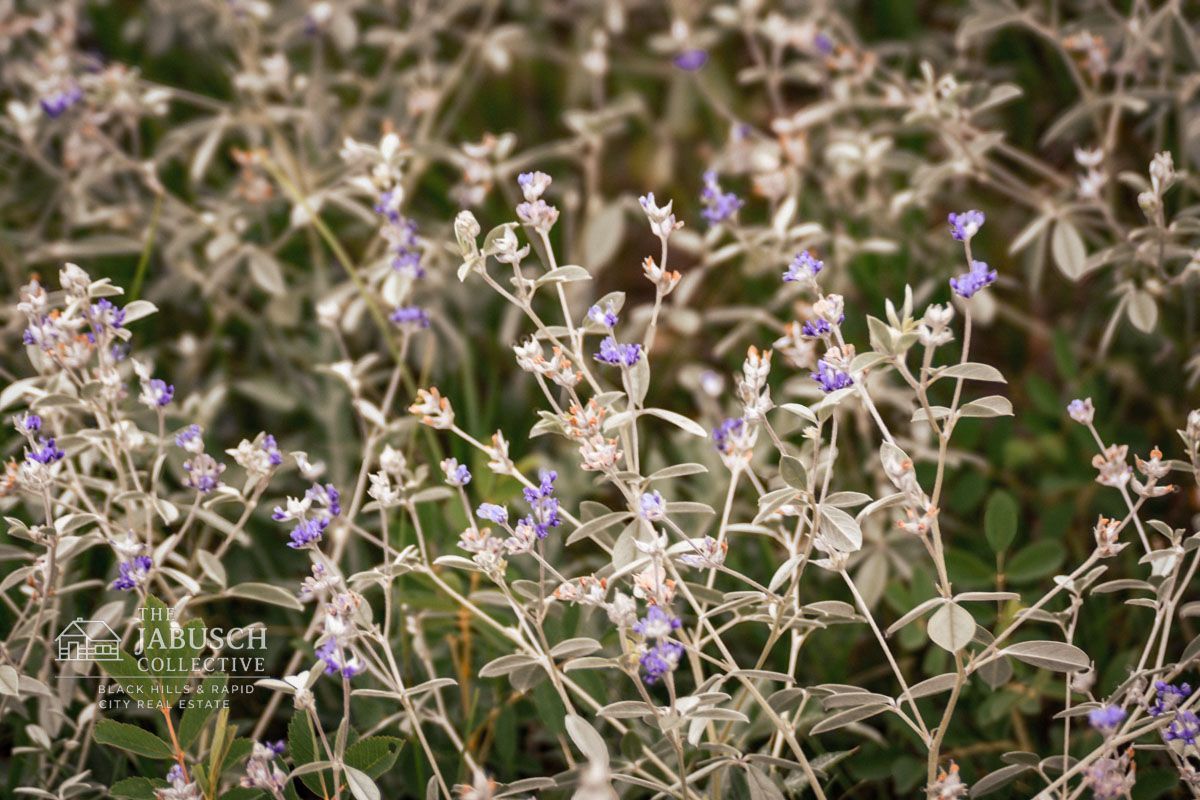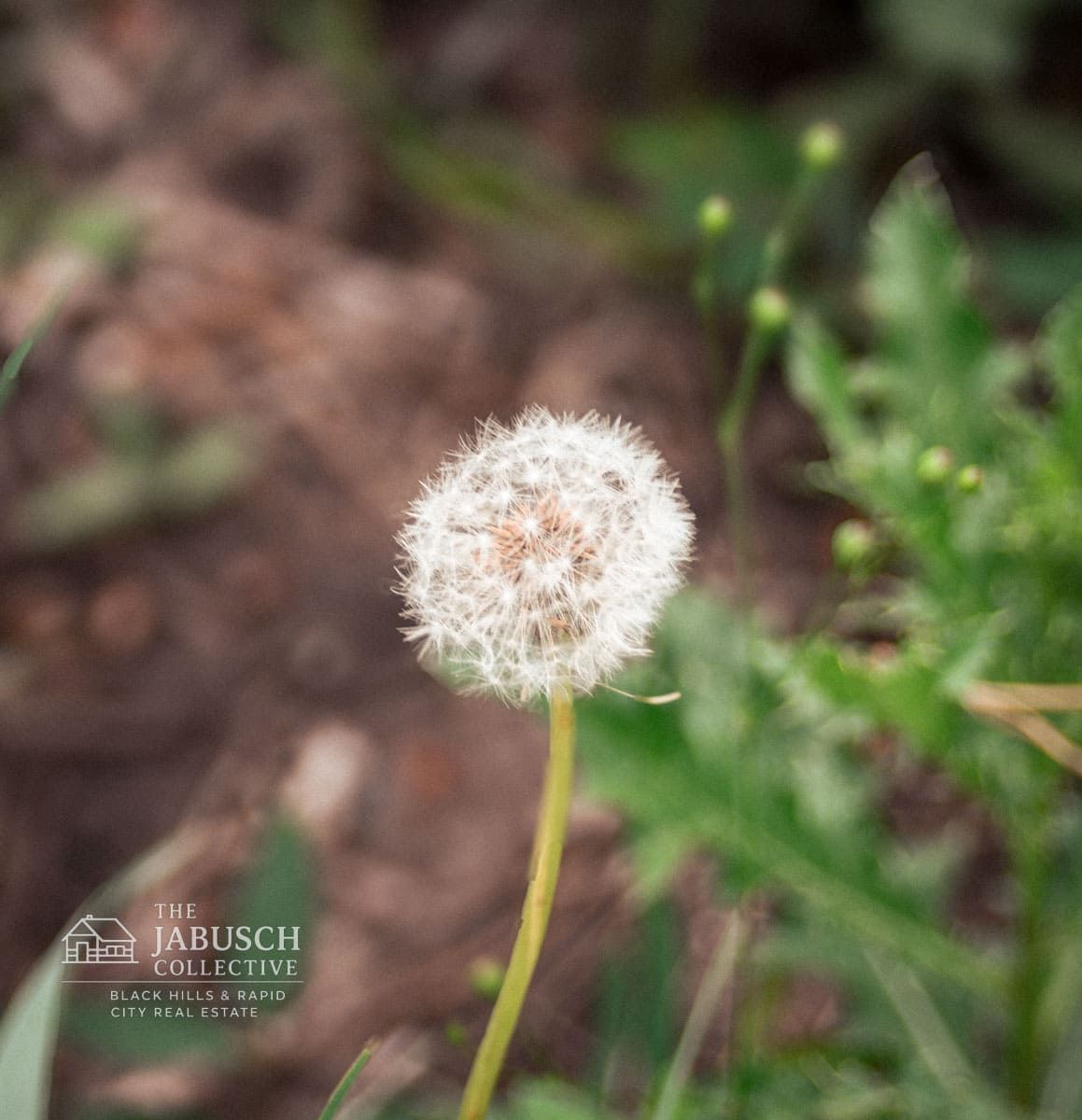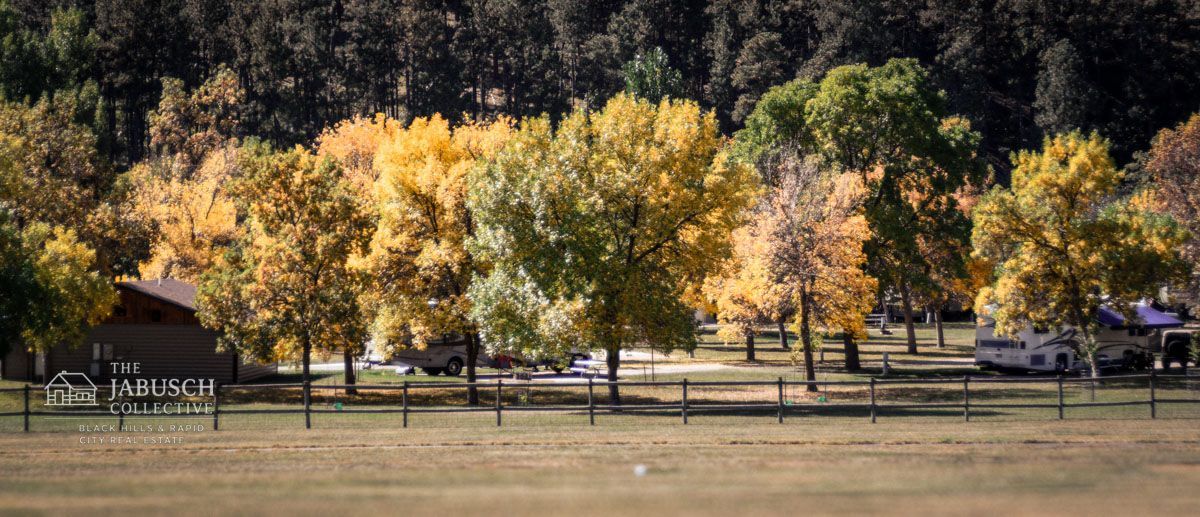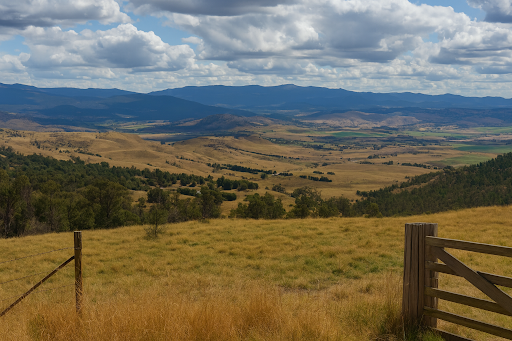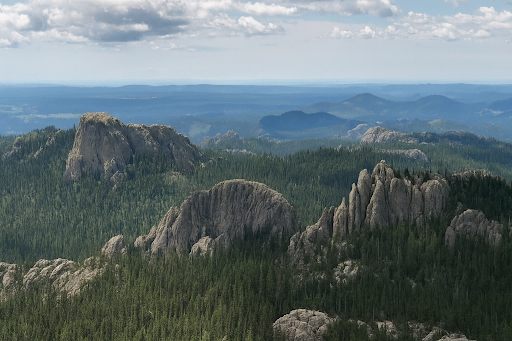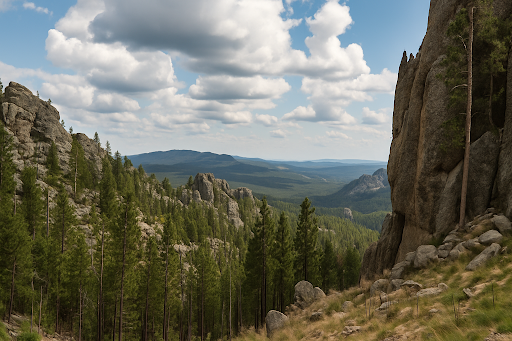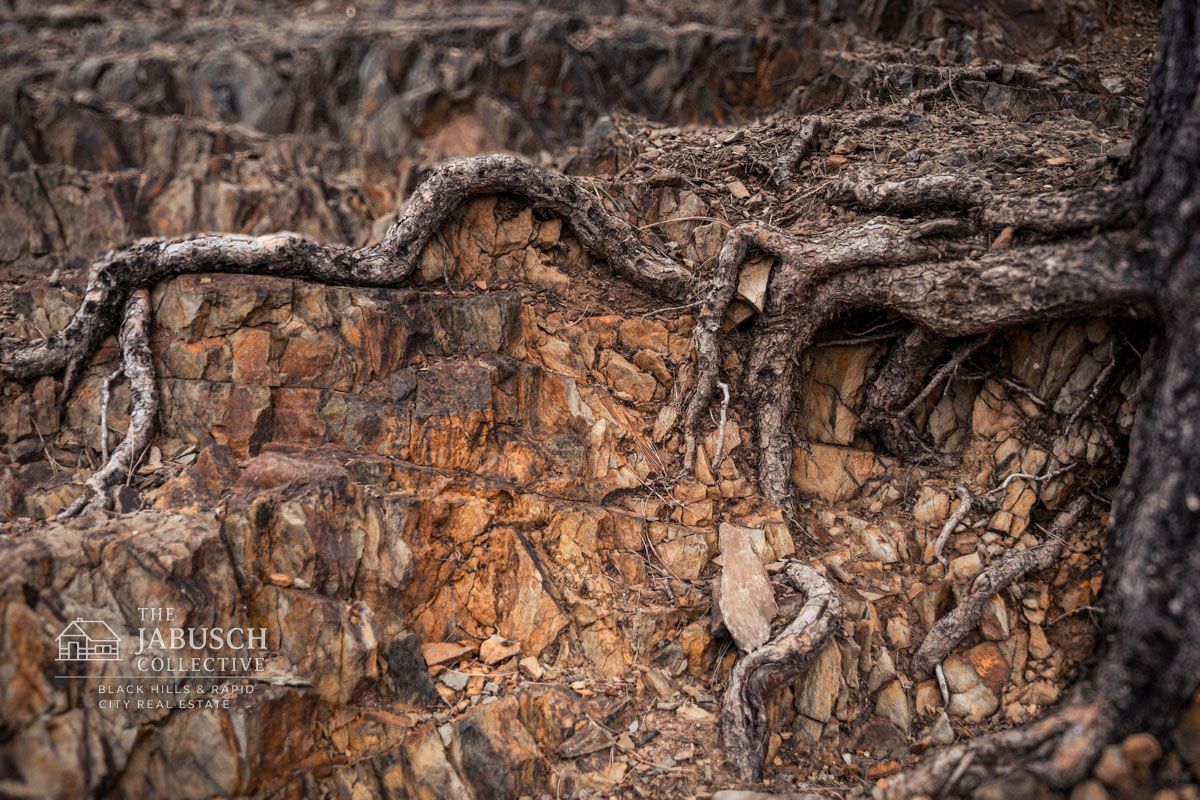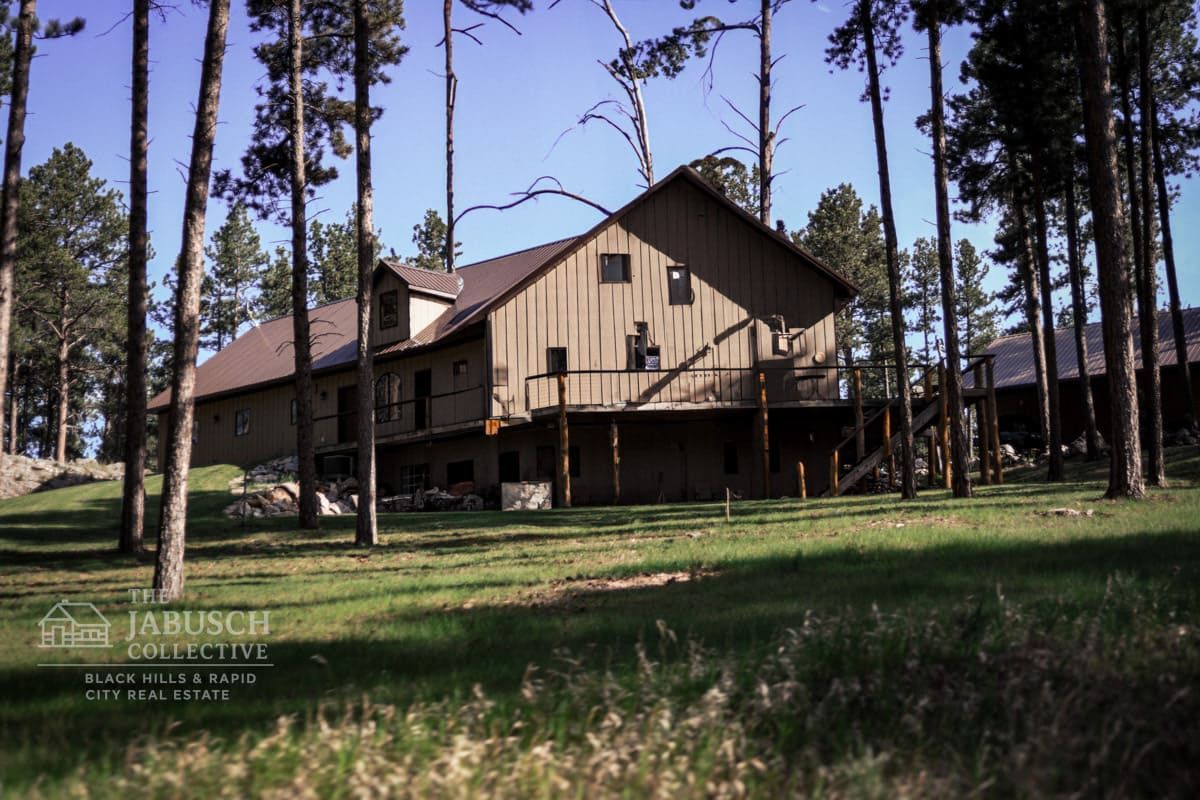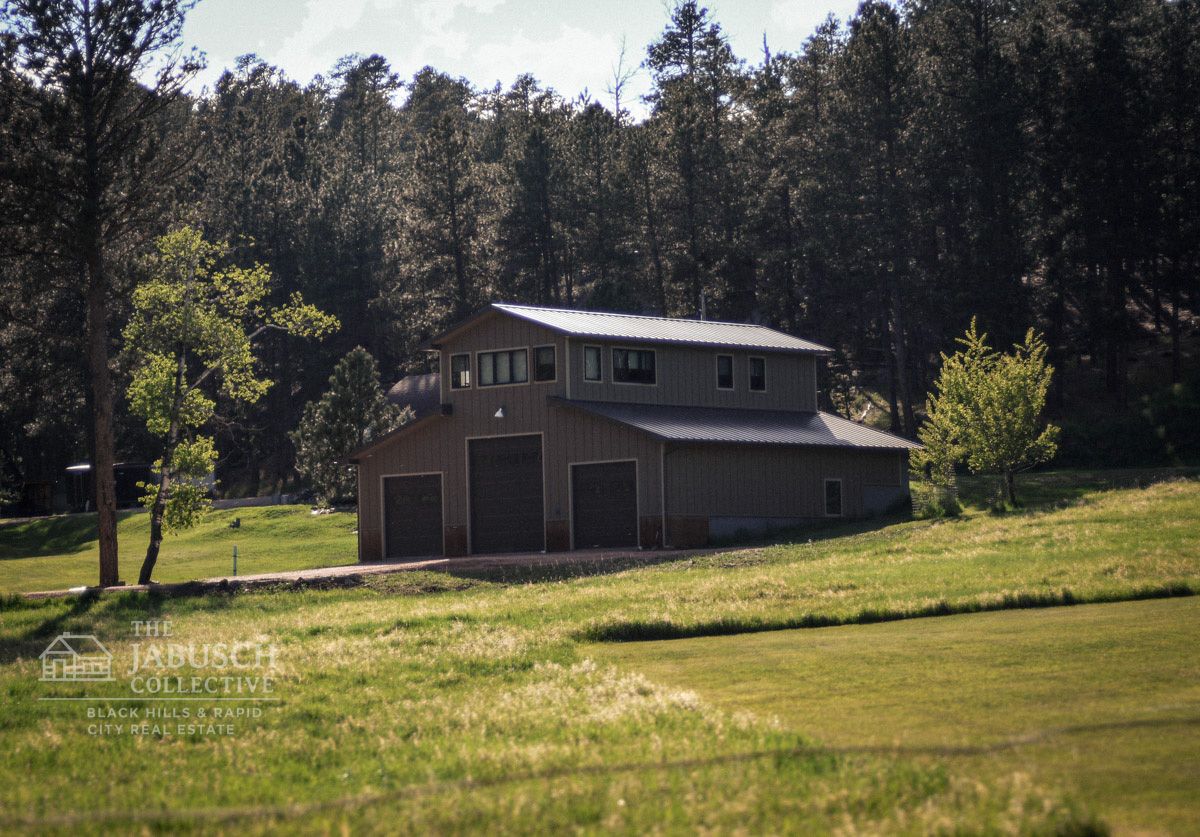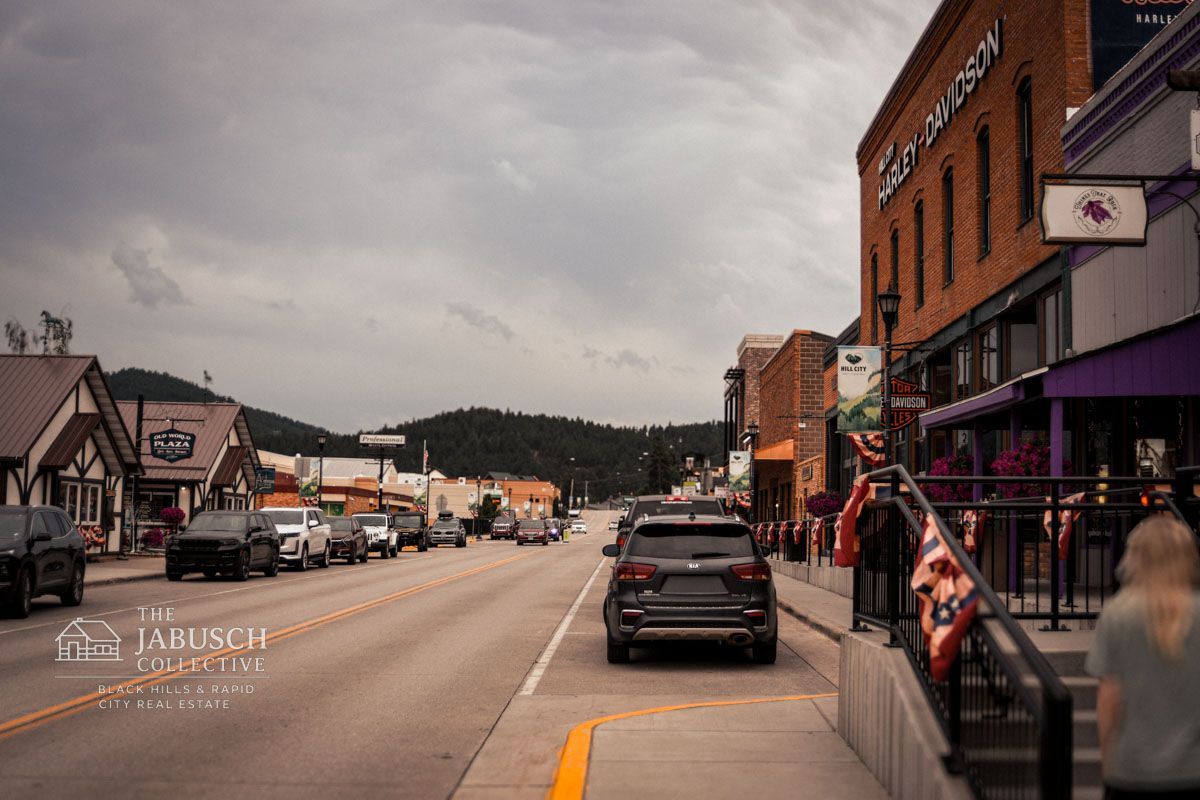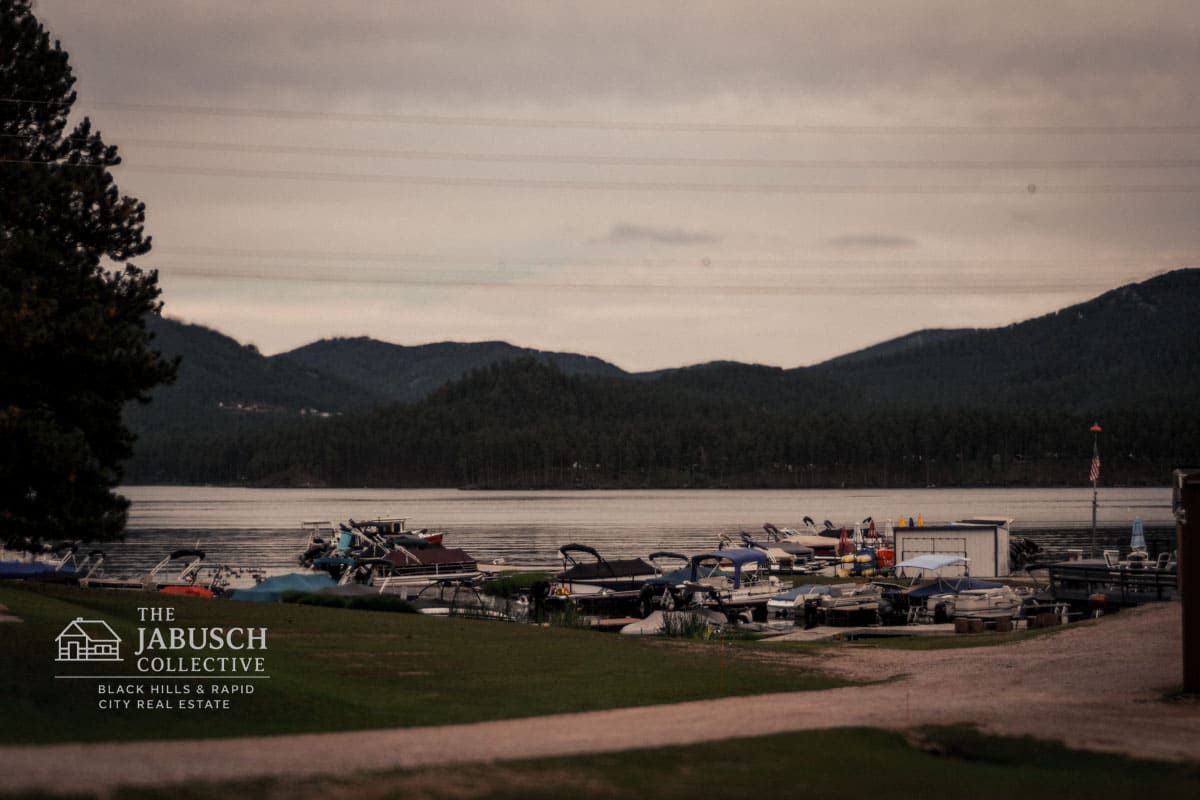A Stroll That Changed Everything
It was a regular walk—nothing planned, no expectations—just some fresh air and time to stretch our legs. Morghan and I were out on one of the quieter trails in the Black Hills when we started noticing them.
Wildflowers.
They were everywhere. Some are small and tucked low to the ground, others reach just high enough to catch the light. The variety surprised us—purples, yellows, soft whites, and deep reds—all scattered like the Hills were trying to show off a little. We kept stopping to look closer, to take pictures, and to figure out which ones we were seeing.
Morghan ended up sending the photos to his Grammy, who gardens and knows her flowers well. She lit up at every single one! That little exchange made the day stick with me. I went home and started researching what we’d found—what they were called, when they bloomed, what they were used for. Some even had medicinal properties, which I was unaware of until I moved here and began reading more.
That walk didn’t just get us out of the house—it gave me a deeper appreciation for this place. And it all started by paying attention to what was growing right under our feet.
Best Times of Year to See Wildflowers in the Black Hills
The Black Hills offer a longer wildflower season than you might expect, thanks to the range of elevations and microclimates throughout the region. From the first signs of spring to the tail end of summer, there’s always something blooming—if you know where and when to look.
Early Bloomers (April – May)
As the snow melts and the ground begins to warm, the first signs of color start to break through. The
Pasqueflower, South Dakota’s state flower, is usually the first to show. Its soft lavender petals and fuzzy stems often pop up while there’s still snow on the ground. You might also spot
wild violets,
early buttercups, and
prairie smoke beginning to rise.
Peak Season (June – July)
Summer is when the show starts. Mid-June through July is peak wildflower time, with trails and meadows bursting with blooms. You’ll see
blanketflowers,
lupines,
wild bergamot,
coneflowers, and
harebells
covering hillsides and open prairies. Butterflies and bees are also most active this time of year, so it’s a good window for both color and wildlife.
Late Season (August – Early September)
Even as the air begins to cool, you’ll still find hardy blooms holding on.
Goldenrod,
asters, and
sunflowers
tend to persist into early fall, especially in lower elevations or sunnier, open areas. These late bloomers add warm tones to the fading green landscape, creating a beautiful contrast before the leaves start to turn.
Elevation & Timing Tips
- Higher elevations bloom a few weeks later than lower trails. If it’s too early in the season where you are, try driving up toward Sylvan Lake or Black Elk Peak.
- South-facing slopes warm faster and tend to bloom earlier than shaded northern trails.
- For long stretches of color, try routes with a mix of open meadows and forest edges.
Medicinal & Cultural Meanings
Long before the Black Hills were known for winding trails and scenic drives, the plants growing here were used with purpose. Many wildflowers have a rich history tied to traditional medicine, spiritual significance, and practical uses that have been passed down through generations.
While we’re not herbalists or healers, here are a few common wildflowers and how they’ve been used over time:
Yarrow
- Use: Traditionally used to stop bleeding and reduce inflammation.
- Cultural note: Sometimes called “soldier’s woundwort” for its role in battlefield remedies
- Modern status: Still found in herbal teas and salves
Wild Bergamot (Bee Balm)
- Use: Steeped as tea for colds and digestion
- Cultural note: Used by Indigenous peoples across the Great Plains
- Modern status: Often included in mint-based blends
Echinacea (Purple Coneflower)
- Use: Immune support, sore throats, and skin issues
- Cultural note: Revered by Plains tribes for its healing properties
- Modern status: A staple in natural health stores worldwide
Prairie Smoke
- Use: Less common today, but once used as a mild sedative or astringent.
- Cultural note: Believed to carry spiritual significance in certain Indigenous stories
- Modern status: Mostly admired for its beauty
Note: These uses are shared for historical interest only. Always consult a professional before using any wild plant for medicinal purposes.
The knowledge tied to these flowers is part of what makes walking the Hills feel so rich. Something is humbling about seeing a patch of blooms and knowing they’ve been part of people’s lives for centuries—not just something pretty to photograph, but something once steeped in meaning, healing, and care.
Wildflowers & Wildlife: Who’s Eating What?
In the Black Hills, wildflowers don’t just exist for our admiration—they’re part of a much larger system. Birds, bees, butterflies, and even deer rely on them for food, shelter, and pollination. Understanding who eats what—and who
avoids what—can give you a deeper appreciation for just how connected this ecosystem is.
Butterflies & Bees: The Pollinator Party
Some wildflowers act like magnets for pollinators, which is excellent news for your garden and the environment:
- Milkweed – Essential for monarch butterflies, both as a nectar source and a place to lay eggs
- Wild Bergamot (Bee Balm) – A favorite for bees, hummingbirds, and butterflies alike
- Purple Coneflower (Echinacea) – A pollinator powerhouse with long bloom time
- Black-Eyed Susan – Attracts native bees and butterflies throughout summer.
Deer, Rabbits & Other Grazers
While you might be tempted to pick a few blooms for yourself, the local wildlife often beats you to it:
- Yarrow – Eaten by deer and sometimes rabbits
- Lupine – Mostly left alone due to mild toxicity, but admired nonetheless
- Clover – A favorite nibble for deer and small grazers
- Blanketflower – Not a first choice for grazers, making it a good pick for home gardens
Natural Bug Repellents
Some wildflowers come with built-in defenses—great for gardens and great for avoiding itchy hikes:
- Yarrow – Has natural insect-repelling properties.
- Tansy (where found) – Known for deterring mosquitoes and ants.
- Wild Bergamot – Contains thymol, which helps repel pests like aphids and gnats.
From the buzzing of bees to the quiet rustle of deer in the brush, wildflowers aren’t just decoration—they’re a food source, a home, and a sign that the land is thriving. Keep your eyes open, and you might just spot who’s visiting the blooms while you're out there.
How to Ethically Pick & Press Wildflowers
It’s tempting. You see a patch of petals swaying in the breeze and think,
“Just one won’t hurt.” But here in the Black Hills—where wildflowers are part of a delicate and protected ecosystem—how you interact with them matters just as much as
why.
If you’re hoping to press a few blooms as a keepsake or use them in handmade gifts, here are a few guidelines to follow:
The Golden Rule: Leave No Trace (Unless You Know You Can)
- Stick to public lands that permit gathering, and avoid protected areas such as national parks, wildlife sanctuaries, or research zones.
- If unsure,
don’t pick it. Better to admire it in place than disrupt native growth or wildlife feeding grounds.
Ethical Wildflower Picking Tips
- Pick
sparingly—never more than one or two from a patch, and only when it’s abundant.
- Use clean scissors or snips to avoid damaging the plant or surrounding roots.
- Choose blooms that are
fully open but not starting to wilt.
- Avoid anything rare, endangered, or that shows signs of insect or animal use.
How to Press Wildflowers at Home
- Pat the flower dry with a clean paper towel
- Place it between two sheets of parchment or printer paper.
- Tuck into a heavy book, stacking additional books on top if needed.
- Leave for 1–2 weeks until dry and flat.
- Store in a cool, dry place or seal with wax paper, glass, or resin
Creative Ways to Use Pressed Wildflowers
- Handmade bookmarks or notecards
- Wedding invitations or favors
- Framed wall art
- Bible journal pages
- Keepsakes for friends or family who haven’t visited the Hills yet
The beauty of a wildflower isn’t just in its bloom—it’s in how you remember it.
Safety Notes: What to Know Before You Pick or Petal-Gaze
Wildflowers may look delicate and harmless, but a few come with precautions worth knowing—especially if you're exploring with kids or pets. Staying aware of your surroundings helps protect both the landscape
and your family.
Dogbane: Beautiful, But Dangerous
- Looks like: Milkweed, but smaller flowers and reddish stems
- Where: Common along roadsides and open meadows
- Why it matters: Toxic to dogs, cats, and even humans if ingested
- Tip: Don’t let pets nibble on any unknown plants, and avoid touching dogbane’s milky sap
Plants That Can Irritate Skin
- Poison ivy can grow near wildflower patches—look for three shiny leaves and stay clear.
- Some wildflowers have fuzzy or sticky stems that may cause mild irritation—wearing long sleeves or pants on overgrown trails is a safe bet.
Allergy Considerations
- Goldenrod often gets blamed, but it’s usually
ragweed (which blooms around the same time) that causes sneezing fits.
- Early spring flowers may stir up pollen for sensitive hikers, so keep allergy medications handy if you're prone to seasonal allergies.
In short? Admire everything, touch very little, and keep an eye on your furry trail companions. A little caution helps ensure your wildflower walk stays peaceful and safe.
Wildflower Field Journal – Midwestern Prairie Bloom Report
This field report outlines key native and naturalized wildflowers commonly found throughout the prairies, foothills, and open meadows of the region. Each entry includes basic identification tips, bloom timing, wildlife interactions, habitat notes, and additional ecological or cultural significance.
Purple Prairie Clover (Dalea purpurea)
- Bloom Time: June to August
- Pollinators: Bees, especially native solitary bees
- Identification: Cone-shaped spike with dense purple-pink flowers; fern-like leaves
- Habitat: Well-drained prairies and hillsides
- Notes: Important nitrogen-fixing plant; indicator of healthy, undisturbed prairie.
Wild Rose (Rosa arkansana)
- Bloom Time: Late spring to early summer
- Pollinators & Wildlife: Bees, butterflies, birds (rose hips)
- Identification: Five-petaled pink flowers, serrated leaves, thorny stems
- Habitat: Open fields, grasslands, and prairie edges
- Notes: Used historically in traditional medicine; the hips are high in vitamin C.
Yellow Sweet Clover (Melilotus officinalis)
- Bloom Time: June to September
- Pollinators: Bees, butterflies
- Identification: Tall, branching plant with small yellow flowers in elongated clusters
- Habitat: Roadsides, pastures, and disturbed soils
- Notes: Non-native; nitrogen fixer; sweet vanilla scent.
Alfalfa (Medicago sativa)
- Bloom Time: May to October
- Pollinators: Bees, especially honeybees
- Identification: Clover-like leaves, small purple to blue flowers
- Habitat: Fields, roadside ditches, retired farmland
- Notes: Cultivated forage plant; often escapes into natural areas.
Fireweed (Chamaenerion angustifolium)
- Bloom Time: June to September
- Pollinators: Bees, hummingbirds, butterflies
- Identification: Tall stalks with magenta flowers; narrow lance-shaped leaves
- Habitat: Disturbed ground, forest edges, recently burned areas
- Notes: Pioneer species; first to grow after fire.
Wild Bergamot (Monarda fistulosa)
- Bloom Time: July to September
- Pollinators: Bees, butterflies, hummingbirds
- Identification: Lavender, spiky flowers with ragged petals; minty scent
- Habitat: Sunny meadows, dry prairies, and woodland edges
- Notes: Leaves used in tea; antimicrobial properties.
Thistle (Cirsium spp.)
- Bloom Time: July to September
- Pollinators & Wildlife: Bees, butterflies, goldfinches (seed)
- Identification: Spiny stems and leaves, large purple flower heads
- Habitat: Roadsides, grasslands, disturbed sites
- Notes: Some species are native, while others are invasive; they are valuable for pollinators.
Goldenrod (Solidago spp.)
- Bloom Time: August to October
- Pollinators: Bees, wasps, butterflies, beetles
- Identification: Tall stems topped with bright yellow flower clusters
- Habitat: Meadows, roadsides, ditches, hillsides
- Notes: Wrongly blamed for allergies; ragweed is the culprit.
Common Yarrow (Achillea millefolium)
- Bloom Time: May to September
- Pollinators: Butterflies, bees, beetles
- Identification: Fern-like leaves, flat-topped clusters of white flowers
- Habitat: Fields, pastures, roadsides
- Notes: Used medicinally for wound healing and digestion.
Fleabane (Erigeron spp.)
- Bloom Time: May to August
- Pollinators: Bees, butterflies
- Identification: Small daisy-like flowers with thin white to lavender petals
- Habitat: Open meadows, roadsides, disturbed ground
- Notes: Historically used to repel fleas (hence the name).
Dogbane (Apocynum spp.)
- Bloom Time: June to August
- Pollinators: Bees (especially leafcutter bees)
- Identification: Reddish stems, opposite leaves, small pinkish-white flowers; milky sap when broken
- Habitat: Open woods, riverbanks, roadsides
- Notes: Toxic to pets and livestock; looks similar to milkweed.
Sunflower (Helianthus spp.)
- Bloom Time: July to September
- Pollinators & Wildlife: Bees, butterflies, birds (seeds), deer
- Identification: Tall stalks with broad leaves and bright yellow flowers
- Habitat: Open fields, ditches, prairies
- Notes: Seeds are a high-energy food source for wildlife.
Purple Coneflower (Echinacea angustifolia)
- Bloom Time: June to August
- Pollinators: Bees, butterflies, skippers
- Identification: Upright purple petals drooping from a spiny brown cone
- Habitat: Dry prairies, sunny slopes
- Notes: Popular in herbal medicine; immune-boosting properties.
Gumweed (Grindelia squarrosa)
- Bloom Time: July to September
- Pollinators: Bees
- Identification: Yellow daisy-like flower heads with sticky resin at the base
- Habitat: Dry, disturbed ground, roadsides
- Notes: Used by Indigenous groups for respiratory ailments.
Red Clover (Trifolium pratense)
- Bloom Time: May to September
- Pollinators: Bees, especially bumblebees
- Identification: Round rose-purple flower heads, three-leaf clover foliage
- Habitat: Pastures, open fields, roadsides
- Notes: Fixes nitrogen in soil; edible blossoms used in teas.
Harebell (Campanula rotundifolia)
- Bloom Time: June to September
- Pollinators: Bees, especially small solitary bees
- Identification: Nodding, bell-shaped lavender-blue flowers
- Habitat: Rocky slopes, open woodlands, dry prairies
- Notes: Also known as the "Bluebell of Scotland," it has a delicate appearance but is remarkably hardy.
Black-eyed Susan (Rudbeckia hirta)
- Bloom Time: June to September
- Pollinators: Bees, butterflies
- Identification: Bright yellow petals around a dark brown central cone
- Habitat: Prairies, roadsides, sunny meadows
- Notes: Popular ornamental and excellent for native gardens.
Silvery Lupine (Lupinus argenteus)
- Bloom Time: May to July
- Pollinators: Bees, butterflies
- Identification: Tall spikes of bluish-lavender pea-like flowers, silver-hued leaves
- Habitat: Open forests, dry prairies, rocky soils
- Notes: Nitrogen fixer; attracts pollinators and enriches soil.
Pasqueflower (Pulsatilla patens)
- Bloom Time: March to May
- Pollinators: Early-season bees
- Identification: Fuzzy stems and leaves; lavender cup-shaped flower with a yellow center
- Habitat: Dry slopes, hillsides, and open woodlands
- Notes: South Dakota’s state flower; one of the first to bloom after snowmelt.
Blanketflower (Gaillardia aristata)
- Bloom Time: June to September
- Pollinators: Bees, butterflies
- Identification: Red-orange daisy-like flower with yellow tips
- Habitat: Prairies, roadsides, disturbed soils
- Notes: Drought-tolerant; attractive ornamental with long bloom season.
Prairie Smoke (Geum triflorum)
- Bloom Time: May to June
- Pollinators: Bees
- Identification: Nodding pinkish blooms that turn into feathery seed heads
- Habitat: Dry, rocky prairies and slopes
- Notes: Named for its wispy seed plumes; visually iconic.
Dandelion (Taraxacum officinale)
- Bloom Time: April to October (but especially prominent in spring)
- Pollinators & Wildlife: Bees (especially early spring pollinators), butterflies, and seed-eating birds
- Identification: Bright yellow, multi-petaled flower heads on hollow stalks; jagged “lion’s tooth” leaves; turns into round, white seed puffballs
- Habitat: Lawns, pastures, roadsides, disturbed soils—thrives almost anywhere with sunlight.
- Notes: Though often dismissed as a weed, dandelions are vital for early-season pollinators. The entire plant is edible; its roots, leaves, and flowers have been used in teas, salads, and traditional remedies. Deep taproots help break up compacted soil and bring nutrients to the surface.
These species not only contribute to regional biodiversity and pollinator health—they also provide visual cues about land quality, soil conditions, and seasonal shifts. Their presence can offer insight into how well a landscape has recovered, adapted, or sustained over time.
Best Time to See Wildflowers in the Black Hills
The peak wildflower season in the Black Hills typically ranges from
late May through early September, with specific species blooming in succession.
- Early bloomers, such as Pasqueflower and Prairie Smoke, begin to show by late March or April in sheltered areas.
- Mid-season stunners such as Purple Coneflower, Wild Rose, and Yarrow dominate by June and July.
- Late-season favorites like Goldenrod, Fireweed, and Sunflowers thrive into August and early fall.
Time your visit around
mid-July for the highest diversity in blooms, especially in open meadows and sunny hillsides.
Where to Find Wildflowers in South Dakota
Some of the best spots to view native wildflowers in their natural habitat include:
- Black Elk Wilderness – alpine meadows and rocky slopes
- Custer State Park – abundant roadside blooms and rolling grasslands (learn what to do for fun here)
- Spearfish Canyon – shady woodlands and limestone cliffs
- Badlands National Park – surprisingly rich flora in prairie pockets
- Private acreages and ranchlands – especially those with low tilling or rotational grazing
Even local ditches, trails, and prairie remnants can offer dazzling displays—particularly if left undisturbed.
Native vs Non-Native Wildflowers: What to Know
- Native wildflowers evolved in this region and play a crucial role in supporting pollinators, maintaining soil health, and promoting biodiversity. Examples include Purple Prairie Clover, Pasqueflower, and Silvery Lupine.
- Non-native species, such as Yellow Sweet Clover and Alfalfa, were introduced for agricultural purposes or erosion control. While not invasive in every case, they can compete with natives for space.
Encouraging native species on your land helps:
- Restore degraded soil
- Attract native pollinators and birds
- Improve property value with low-maintenance natural beauty
Wildflowers and Real Estate: What Plants Say About the Land
Wildflower presence can indicate:
- Soil Health (yarrow, clover)
- Land History (fireweed post-disturbance)
- Pollinator Activity (cone flowers, sunflowers)
- Grazing or Farming Past (alfalfa, dogbane)
For those looking to purchase land in the Black Hills or the surrounding prairie, these native plants can serve as ecological indicators. They provide insight into soil fertility, management history, and the land's long-term potential. As
local real estate professionals, we leverage our in-depth understanding of the local ecosystem to help clients not only find the right property, but also understand it.
Whether you're hoping to homestead, steward wildlife, or preserve beauty, our knowledge of the land goes far beyond acreage and fences.
Reach out to explore listings where nature still speaks its own language.
FAQ: Wildflowers of the Black Hills
What’s the best month to see the most wildflowers?
July offers peak diversity, but blooms can be found from April through October, depending on elevation and rainfall.
What’s the state flower of South Dakota?
The Pasqueflower (Pulsatilla patens) is one of the earliest spring blooms.
Are wildflowers important for real estate?
Yes! Native plants signal healthy soil and minimal chemical disturbance—an appealing trait for buyers seeking land with high quality.
Can I plant wildflowers on my property?
Absolutely. Focus on native seed mixes to support your local ecosystem and minimize watering and maintenance requirements.
Do wildflowers attract pollinators?
Yes! Most listed species support bees, butterflies, and hummingbirds—making your landscape both beautiful and functional.
